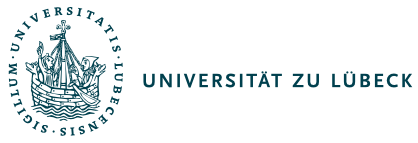Duration:
1 Semester | Turnus of offer:
each winter semester | Credit points:
6 |
Course of studies, specific field and terms: - Master Infection Biology 2012 (compulsory), Clinical Aspects, 1st semester
|
Classes and lectures: - Diagnostical Methods in Microbiology and Pathology (seminar, 1 SWS)
- Diagnostical Methods in Microbiology and Pathology (practical course, 2 SWS)
- Diagnostical Methods in Microbiology and Pathology (lecture, 2 SWS)
| Workload: - 75 Hours in-classroom work
- 105 Hours private studies
| |
Contents of teaching: | - Lecture: Diagnosis/ Pathology of bacterial infectious; Diagnosis/ Pathology of viral infectious; Diagnosis/ Resistance of mycobacteria; Diagnosis of fungi and parasites; Nucleic acid-based techniques used in the diagnosis of infectious diseases; Serological techniques for the diagnosis of infectious diseases; Diagnosis of emerging infections
- Seminar: Selected topics concerning the diagnosis of infectious diseases (i.e. diagnostics of bacterial and viral infections, molecular diagnostics, resistance testing of bacteria and viruses, biomarkers as novel tools to detect infections, mass spectrometry in clinical microbiology, and application of next generation genome sequencing for infection diagnostics)
- Practical course: Basic laboratory rules and instructions for handling infectious organisms and materials; Techniques of bacteriology: Culture, media, preparation of slides, staining techniques; Characterization and identification of microbes (bacteria, fungi, protozoa, helminiths) by macroscopic and microscopic growth characteristics and morphology; Biochemical characterization of bacteria; Diagnostic immunology/serology: agglutination, precipitation, immunofluorescence; Diagnosis by the novel technique-MALDI-TOF/MS; Analysis of antibiotic susceptibility
| |
Qualification-goals/Competencies: - Students are able to list the different concepts for the diagnosis of infectious diseases (pathogenic bacteria, fungi, virus and parasites).
- In addition they will learn about prominent pathological entities of infectious diseases, on a macroscopic and histological level.
- They are able to illustrate and discuss these concepts with the aid of appropriate examples.
- They are able to assess the potential and the limitation of a given diagnostic concept and to propose alternative strategies.
- They do understand and are able to explain the underlying principles of a given technique.
- They are able to identify unknown pathogens from suspected infectious materials of respiratory, intestinal, urinary tract and blood infections by various diagnostic techniques.
- They acquire competences in presenting and discussing scientific results.
|
Grading through: |
Is requisite for: |
Responsible for this module: Teachers: - Prof. Dr. med. Jan Rupp
- Prof. Dr. rer. nat. Tobias Restle
- Prof. Dr. med. Sven Perner
- Prof. Dr. rer. nat. Stefan Niemann
- Prof. Dr. rer. nat. Georg Sczakiel
- Dr. rer. nat. Martina Behnen-Haerer
- PD Dr. Kensuke Shima
- Prof. Dr. rer. nat. Stefan Taube
- Prof. Dr. rer. nat. Marc Ehlers
- Dr. math. et dis. nat. Jeroen Mesters
- Dr. med. Waltraud Anemüller
- PD Dr. med. Jan Kramer
- Dr. med. Thierry Rolling
- Dr. med. Katharina Kranzer
- Prof. Dr. rer. nat. Torsten Goldmann
- Dr. med. Rosemarie Krupar
|
Literature: - n.n.: Current scientific literature
|
Language: |
Notes:The final grade is calculated from weighted partial grades as follows: 20% seminar, 40% lecture (exam) and 40% practical course (protocol & oral examination).
The module Diagnostical Methods in Microbiology and Pathology is required for the participation in Infection Biology 2.
The total amount of time allocated to a written examination is usually between 60 and 180 minutes (Examination Regulations). |
Letzte Änderung: 25.8.2023 |



















für die Ukraine